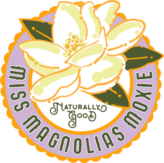Nutmeg, (Myristica Fragrans, Myristicaceae Family)
Common Name: Mace (arillus of the fruit)
Medicinal Part: Kernels of fruit
Description: Nutmeg is a tree, native of Indonesia (cultivated in Molucca Islands, West Indies, and South Africa), about 20 feet high, having a grayish brown and somewhat smooth bark. The alternately arranged leaves are dark green, 5–15 cm (2.0–5.9 in) long by 2–7 cm (0.8–2.8 in) wide with petioles about 1 cm (0.4 in) long. The species is dioecious, i.e. “male” or staminate flowers and “female” or carpellate flowers are borne on different plants, although occasional individuals produce both kinds of flowers. The flowers are bell-shaped, pale yellow and somewhat waxy and fleshy. Staminate flowers are arranged in groups of one to ten, each 5–7 mm (0.2–0.3 in) long; carpellate flowers are in smaller groups, one to three, and somewhat longer, up to 10 mm (0.4 in) long. The nutmeg fruit is oval or nearly round and of a brown and wrinkled aspect. Mace is a beautiful and bright red skein located around the nutmeg seed. It is used in cooking and as a medicinal spice. Nutmeg is the brown seed located inside of the mace.
Properties and Uses: Nutmeg is commonly used as a culinary spice. But, it also has health benefits including sleep aid, reducing anxiety, relieving bloating and gas, and addressing high blood pressure. It is a mild hallucinogenic drug.
Dose and Preparation: Nutmeg can be toxic when taken in high enough dosages. Taking over 6 grams of nutmeg will be a powerful sedative.
Tea: Pour 1 pint of boiling water over a crushed nutmeg and allow to stand until cool, then strain. Take 1 cupful retiring to aid in restful sleep. 1/2 to 6 gms. in an infusion. Not recommended during pregnancy or breastfeeding. Not recommended in excess.

